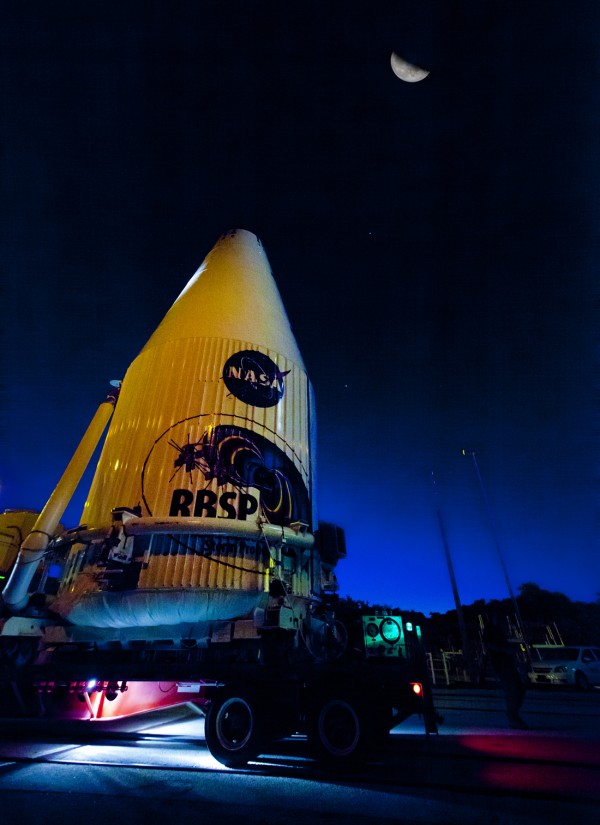
Launch update: After a few postponements, RBSP launched successfully at 4:05 a.m. EDT on Thursday, August 30.
On August 24, the NASA Radiation Belt and Storm Probes (RBSP) mission will launch into orbit to study the forbidding belts of radiation that encircle Earth, which are trapped here by our planet’s magnetic field. Dual spacecraft will carry pioneering LASP-built instrumentation to study radiation belt particles and fields.
LASP Director and an RBSP instrument lead Dan Baker said, “Researching radiation belt physics is a major aspect of LASP science. Adding our cutting-edge instrumentation capabilities has put us firmly on the ‘hardware map’ for energetic particle measurements and research. Radiation belt science is a strong focus for LASP’s future.”
LASP’s involvement in RBSP centers on providing the know-how to explore the central questions in radiation belt science: Are radiation belt particles transported to near-Earth space from other locations and then trapped here? Or are low-energy particles, already trapped by the Earth’s magnetic field, subsequently heated to high-energy levels?
Bob Ergun, LASP scientist and an RBSP instrument Co-Investigator, said, “This is an exciting mission because we are going to measure all the important aspects of the radiation belt environment: the particles, the waves that are acting on them—and the ways the near-Earth radiation environment changes in both space and time.”
The LASP-built Relativistic Electron Proton Telescope (REPT) will directly measure near-Earth space radiation particles to understand their intensity, acceleration, number, and direction. The instrument is part of the RBSP Energetic Particle, Composition, and Thermal Plasma Suite (ECT). A miniature version of REPT is slated to launch aboard a CU-student-built CubeSat this month.
Xinlin Li, LASP scientist and PI of the student CubeSat mission, said, “The addition of our simplified REPT instrument to LASP’s existing suite of hardware specialties offers an important avenue for LASP to advance the scientific understanding of the radiation belts.”
The RBSP Digital Fields Board will study the electric fields that energize the particles that make up the radiation belt; this instrumentation is part of the RBSP Electric Field and Waves Suite (EFW).
David Malaspina, LASP scientist and fields expert for the Digital Fields Board, said, “LASP is a world leader in designing and building signal processing boards like the Digital Fields Board, which serves as the ‘brains’ behind RBSP’s Electronic Fields and Waves instrument.”
The RBSP mission consists of twin spacecraft that will traverse through the intense heart of the radiation belts, taking identical measurements during each orbit. The particles that make up the radiation belts are capable of penetrating and damaging sensitive electronics on board “workhorse” spacecraft, such as those responsible for weather monitoring and prediction, navigation, and communications. The radiation belts also pose a biological hazard to astronauts passing through the belts during manned missions.
Scot Elkington, LASP scientist and particle theorist for ECT, said, “RBSP is specially built to withstand the very dangers it is studying. This mission will give us unprecedented data to further our understanding of the radiation belts, their potential effects on human technologies and space exploration, and our ability to predict harmful space weather events.”
More Information
Contact
- Bob Ergun, EFW Co-I: 303-492-1560 or Bob.Ergun@lasp.colorado.edu
- David Malaspina, EFW scientist: 303-492-9501 or David.Malaspina@lasp.colorado.edu
- Xinlin Li, CubeSat PI and ECT scientist: 303-492-3514 or Xinlin.Li@lasp.colorado.edu
- Scot Elkington, ECT scientist 303-735-0810 or Scot.Elkington@lasp.colorado.edu



